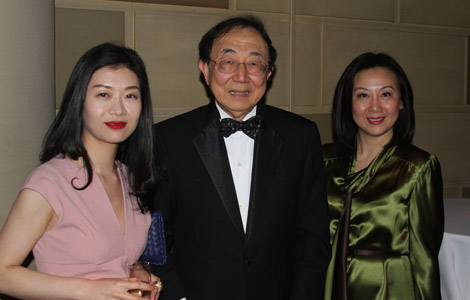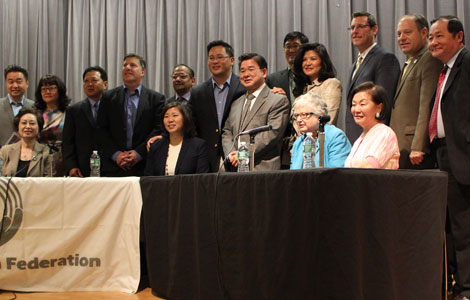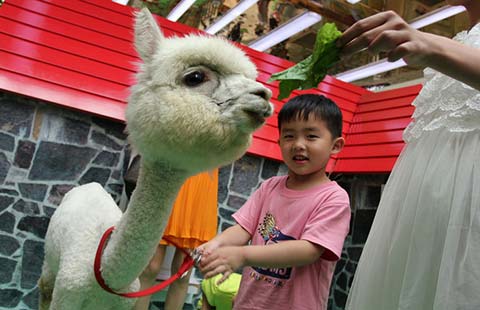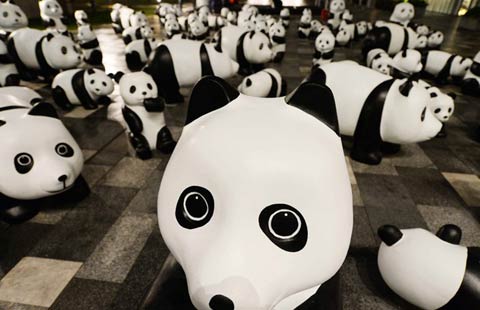Students find Shanghai 'cooler' than New York City
Updated: 2014-06-04 11:01
By Chen Weihua in Washington (China Daily USA)
|
||||||||
Julia Stein, a fifth grader who has been studying Chinese for five years at the Potomac Elementary School in Maryland, made her first trip to China in April.
Of the four cities she visited - Beijing, Shanghai, Lijiang and Xi'an - she likes Shanghai the best. "It's really modern. The buildings are tall. I really like it. I think some of the buildings in Shanghai are cooler than the buildings in New York," said Stein.
The 11-year-old was observant, saying that she likes Lijiang in southwest China too. "There was not much pollution there," she said.
In Beijing, Stein and other students on the trip got a chance to interact with their pen pals at the Elementary School affiliated to the Renmin University of China.
Ava Fiallo, a fifth grader who was also on the trip, said she talked to her pen pal, Cindy, about how big the Beijing school is and how she likes the city.
She found there are so many more people in the four Chinese cities than in Maryland.
"It's really crowded everywhere," echoed Kylie Bloise, another fifth grader on the trip.
Bloise said it was really cool to see the Forbidden City and Terra-Cotta Warriors.
Stein, Fiallo and Bloise are among a quarter of the more than 500 students at Potomac Elementary School attending a Chinese immersion program. Potomac was the first public school in the US to offer such a program starting in 1996.
It is a partial immersion program, which means students spend half of their day being taught in Chinese for their math and science courses and the other half of the day receiving instruction in English.
According to a report by the Mandarin Immersion Parents Council in 2012, there were at least 119 US schools that offer Chinese immersion programs. The report was based on incomplete data, so the actual figure is believed to be higher.
California and Utah boast far more Chinese immersion programs than other states, according to the report.
At the Potomac school, when some students speak Chinese, their pronunciation sounds so authentic, it is hard to tell if it's from a non-native Chinese unless you look at them.
Dr Zhang Zhian, who has been teaching the Chinese immersion program to fifth graders, said speaking Chinese without an accent is the strength of the program, but he admits that reading and writing is still hard. Each Chinese immersion class at the school has 28 or 29 students, so practice time is limited. .
However, the enthusiasm of students studying Chinese has been obvious since students have to go through a lottery in order to get into the class.
Zhang said the school has organized trips to China since 2001. This year's group included 17 students and 18 parents on the two-week trip.
With a doctorate in education from the State University of New York at Buffalo, Zhang joined the Potomac Elementary School in the 1998-1999 academic year.
"It has been fun teaching at the public school, with parents paying a lot of attention on education," he said.
Cui Caihong, who has been teaching fourth graders in the Chinese immersion program at the school since last fall, agreed. She said there has been a lot more teacher-parent interaction here than at schools in China. "I send email to parents every week informing them what will be taught the coming week," said Cui, who graduated from University of Maryland last year with a master's degree in education.
The Potomac Elementary School now has four teachers on the Chinese immersion program, with another two from Hanban, a public institution affiliated with China's Ministry of Education.
Sophia Brandt, a fourth grader at the Potomac Elementary School, said studying Chinese has been fun and she has made a lot of progress.
chenweihua@chinadailyusa.com

 Low carbon never means low fun
Low carbon never means low fun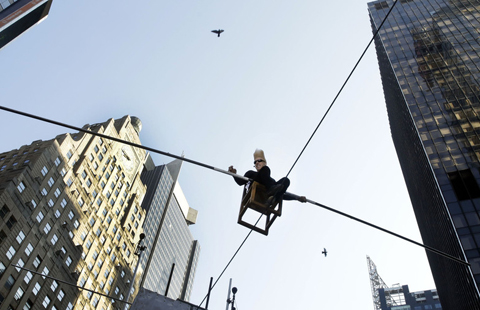
 Times Square feat kicks-off summer of stunts
Times Square feat kicks-off summer of stunts
 Graduate wins ticket to go to China's American Idol
Graduate wins ticket to go to China's American Idol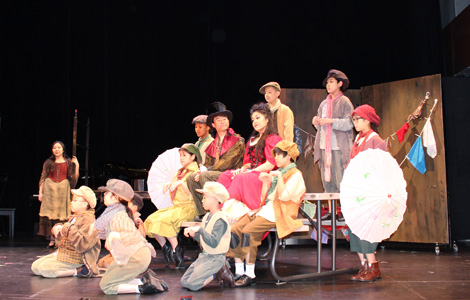
 Chinese-American kids win roles in Oliver!
Chinese-American kids win roles in Oliver!
 Teaching Chinese children self-esteem through dance
Teaching Chinese children self-esteem through dance
 New Bay Bridge woes called 'maintenance'
New Bay Bridge woes called 'maintenance'
 Students find Shanghai 'cooler' than New York City
Students find Shanghai 'cooler' than New York City
 China or US: Which offers a better life?
China or US: Which offers a better life?
Most Viewed
Editor's Picks

|

|
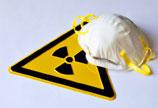
|

|
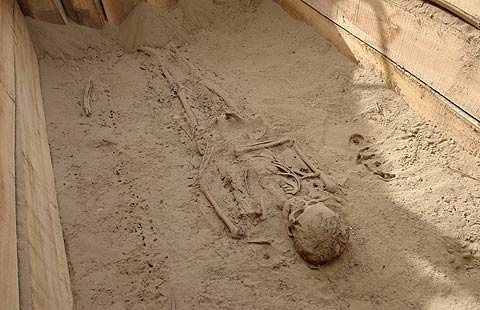
|
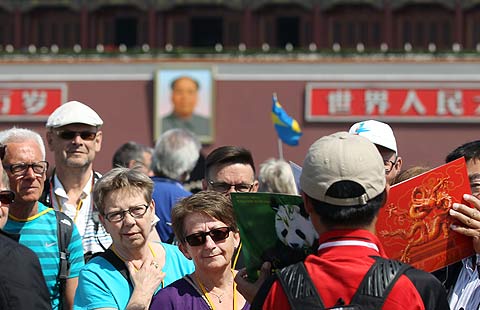
|
Today's Top News
Putin responds to 'aggressive' US
G7 willing to step up sanctions on Russia
Germany investigates alleged NSA Merkel phone tap
NASA needs to reexamine China exclusion policy
Drill may calm choppy ties with US
Taliban video shows handover of US soldier
China says 'punitive' PV duties fray Sino-US ties
Audit firms, SEC talk terms
US Weekly

|

|
